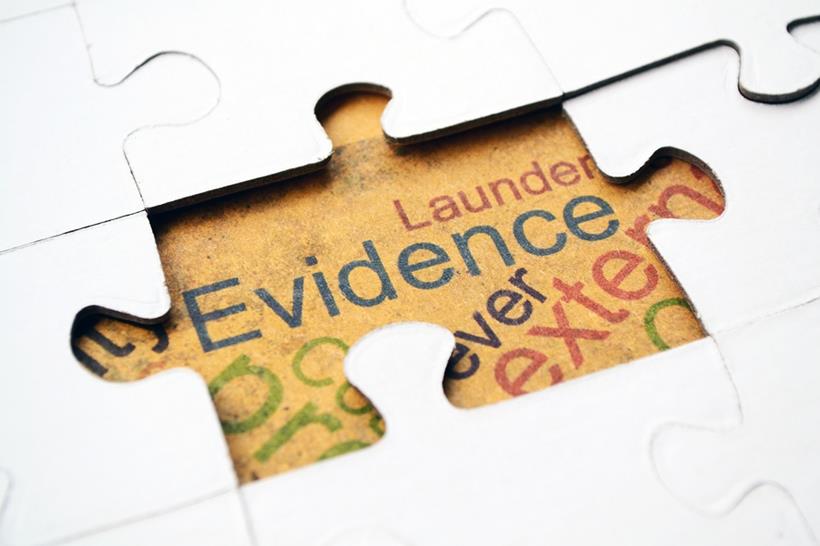
EDRMS Implementation Challenges of Senior Management
“But TRIM is useless for searching. Once you put files in there, you can never find them!” said the senior manager of an Australian government institution with significant control over the fortunes of the Australian economy.
The temptation to rebut this extreme assertion was almost irresistible.
I knew if I did, though, that I’d be making an already difficult situation impossible. The manager was a strong, intelligent woman of great influence. She was also a harsh critic of previous failed attempts to implement good records and information management practices using an Electronic Document and Records Management System (EDRMS). She was a confirmed sceptic, which is why I was talking to her as part of our attempts to uncover the blockers to change in the institution.
If I had succumbed to temptation and rebutted her argument, the probability is that we would have entered a debate about the need – or otherwise – of consistent titling, education people in search methods, consistency in use of classification of information assets, and the potential use of other TRIM functionality such as relating records. In short, we would have achieved nothing.
So, I continued to ask what other issues she had with TRIM. Hopefully I maintained my composure as she related myth after myth, demonstrating a significant level of unconscious incompetence in relation to records and information management for someone who was so capable.
We went on to discuss what other issues she had. I tried to focus on the problems she had with her current favoured approach to managing information, which was to use structured, shared folders on a network drive.
What I was looking for was the one issue she had that TRIM could solve unequivocally. When she said “We have a real issue with making sure that all the previous versions of a document are deleted after a policy decision has been made,” I knew I had found my moment – the kryptonite to her resistance to TRIM.
“Would it be helpful,” I said, “if I could show you how you could do that in one or two mouse clicks in TRIM?” I took her through it, explaining that even though they didn’t have the functionality currently turned on in TRIM, it was easy to set up. As an added bonus, I explained that by using TRIM, not only would they be able to delete any previous versions from the TRIM database, but email attachments would become inaccessible as well – an option not available with shared drives at all.
She was hooked. This was a big deal to her. I was then able to say in later meetings, “What if I could show you how searching can be made to work as well as – if not better than – Google in TRIM?”
And so on it went. With the help of our partners Linked Training, we were able to debunk the myths and stories, taking this senior manager from unconscious incompetence to conscious incompetence and, slowly, to conscious competence. So much so, that she went from a sceptic to the most fearsome supporter of the use of TRIM and good records and information management processes.
Lessons Learned
So what are the lessons learned in dealing with unconsciously incompetent people in the world of records and information management?
- Don’t try to refute their beliefs – even if they are erroneous – without first building trust.
- Build that trust by solving problems for them. Try to choose problems that are easily solved by the EDRMS functionality, or a simple process change, and about which they don’t already have strongly-held beliefs about the system’s capabilities. Try to provide that ‘aha’ moment of enlightenment.
- Once that trust has been built, you’ll have earned the opportunity to tackle more complex problems that may require a solution comprising a combination changes to process, standards, and functionality.
With senior managers, this can effectively be done in one-on-one situations, as outlined above. With teams, it’s a good solution to instead use a workshop environment.
Principles of Workshop Design
It’s possible to use the same principles in designing the workshop. Applying these principles to a workshop design results in the following basic design framework:
- Brainstorm the issues the team has with the way the EDRMS operates, if you have one, and with other methods of managing information.
- Isolate a few key issues where the functionality of an EDRMS would provide a solution. There will always be plenty.
- Ask participants what the outcomes are of not resolving these issues. Usually, the potential negative outcomes of the more severe issues will include fatalities or serious injuries, major financial loss or asset destruction, or major reputational loss.
- Demonstrate the functionality of your current or intended EDRMS, ensuring that you demonstrate the functionality that you know will resolve many problems of using shared drive structures. For instance, consider demonstrating:
a. How security can be applied to files and folders.
b. How audit trails work.
c. Automatic revisions.
d. Deletion of revisions.
e. The elimination of deleted revisions from emails, compared to having attachments left available for viewing and sending.
f. The ability to relate files, which is great for people who have a lot of documents related to one topic, such as projects or procurement.
g. Workflow, including reporting.
h. If you can, scanning possibilities are another good bit of functionality to demonstrate.
5. For each issue, ask participants to choose one or more functionalities from those demonstrated that would resolve the issue.
6. Ask participants to rate the priority of implementation for the functionality demonstrated on a four-point Likert scale:
a. Definitely should implement.
b. Probably should implement.
c. Probably should not implement.
d. Definitely should not implement.
From my observations, the majority of people employed in management roles in Australia are unconsciously incompetent when it comes to the management of information and the functionality of an EDRMS. Dealing with them can be frustrating, but need not be impossible—after all, every records and information professional has access to information that will act as that bit of kryptonite to break down their resistance. A little patience and some common sense is required to unlock their ‘aha’ moments, and after that, you and your project should be off to a flying start.






